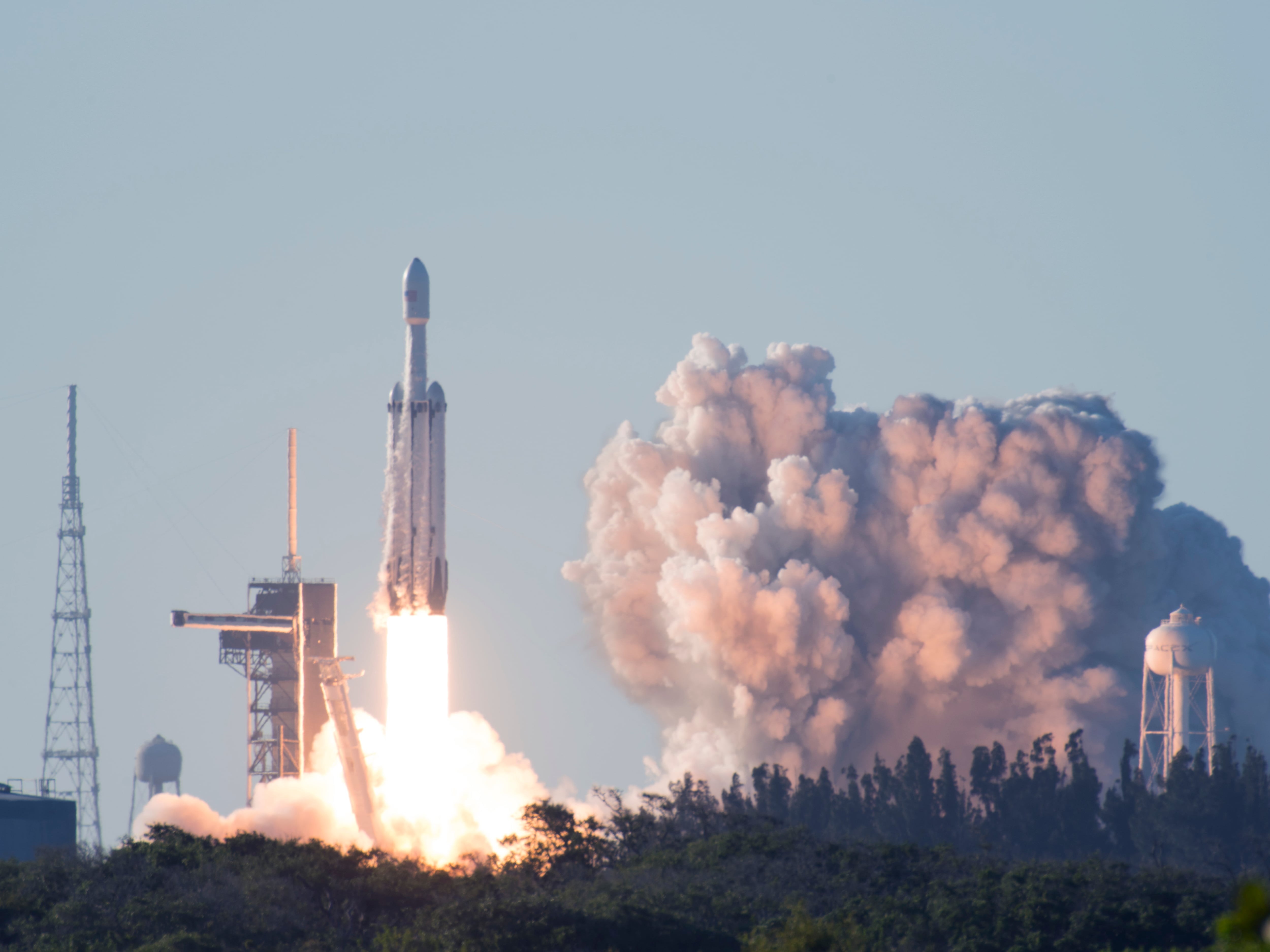WASHINGTON — U.S. Transportation Command is taking the potential for cargo delivery via orbit seriously enough that it hopes to test the concept with SpaceX as soon as next year, the command’s head said Wednesday.
In what he called a “provocative thought,” Gen. Stephen Lyons said: “I’m really excited about the team that’s working with SpaceX on an opportunity, even perhaps in as early as ’21, to conduct a joint proof of principle” for space-based delivery.
The dream, Lyons told the National Defense Transportation Association, is to be able to move 80 tons of cargo — the equivalent of a C-17 transport — via a space-based vehicle anywhere on the globe within one hour.
“Think about the speed associated with that, whether a small force element or other capability,” he said. “I can tell you [SpaceX is] moving very, very rapidly in this area.”
A TRANSCOM spokesman said details of the potential “proof of principle” are being worked out with SpaceX, and it will involve “delivering cargo from one place to another through space.”
In a public release after Lyons' comments, TRANSCOM revealed that the command entered into two cooperative research and development agreements, or CRADA, related to the project. The Elon Musk-founded SpaceX signed on in March, and xArc, a commercial “space architecture” firm, signed on in April.
Under the CRADAs, the two firms are working to assess technical, regulatory and cost barriers to the idea of space-based delivery. While the agreements do not come with federal funding, TRANSCOM is “providing expertise in logistics and distribution in austere environments which will inform commercial space industry efforts to support programs that will ultimately be required to operate on the lunar surface and eventually Mars,” according to the news release.
SpaceX has gained notoriety for its ability to launch and then land a reusable system back on Earth, something that has led to speculation that there could one day be space-based transportation around the globe. xArc’s role is unclear, but based on its portfolio, the Austin, Texas-based company may be working on designing a landing pad of some sort.
Requests for comments from SpaceX and xArc were not returned by press time.
RELATED

The appeal of being able to launch cargo into orbit from the continental United States and have it land quickly is easy to see. And the concept of “point to point” cargo transfer has been around a long time. But while the concept seems relatively simple on paper, there are technical issues in the way, cautioned Brian Weeden, a former Air Force officer now with the Secure World Foundation.
“The first big problem is G-forces, the acceleration at the beginning and then again at the end as you speed up to thousands [of] miles per hour and back down to zero,” Weeden said. “The other is that you’re still limited in where you can go. An [intercontinental ballistic missile] travelling on a ballistic flightpath can go from the U.S. to Russia over the North Pole, but can’t go via the South Pole. If you actually place the payload in orbit, it can theoretically go anywhere given enough time, but requires a lot more energy and cost.”
Weeden added there “are many technical, economic and legal pieces that need to be worked out before Starship becomes a viable point-to-point transportation system.”
Technical questions aside, Lyons promoted another benefit from the idea of the design: cutting through “what traditionally today becomes a real area of friction, which is traditional access basing and overflight, the diplomatic alignment that’s required to move very rapidly across the globe.”
Todd Harrison of the Center for Strategic and International Studies said that lines up with the norms of space flight established in the Outer Space Treaty — that permission is not needed for overflight via orbit.
“So that makes getting to places much easier politically, especially for land-locked countries like Afghanistan,” Harrison said. "Landing is different and would operate like it does in the air domain because you are transiting through the atmosphere. So if you need permission to land, you would have to get approval first.
“But in combat, of course, you [wouldn’t ask for] permission to land in adversary territory, just like using a helicopter to ferry supplies and personnel behind enemy lines. You would just do it.”
Aaron Mehta was deputy editor and senior Pentagon correspondent for Defense News, covering policy, strategy and acquisition at the highest levels of the Defense Department and its international partners.








